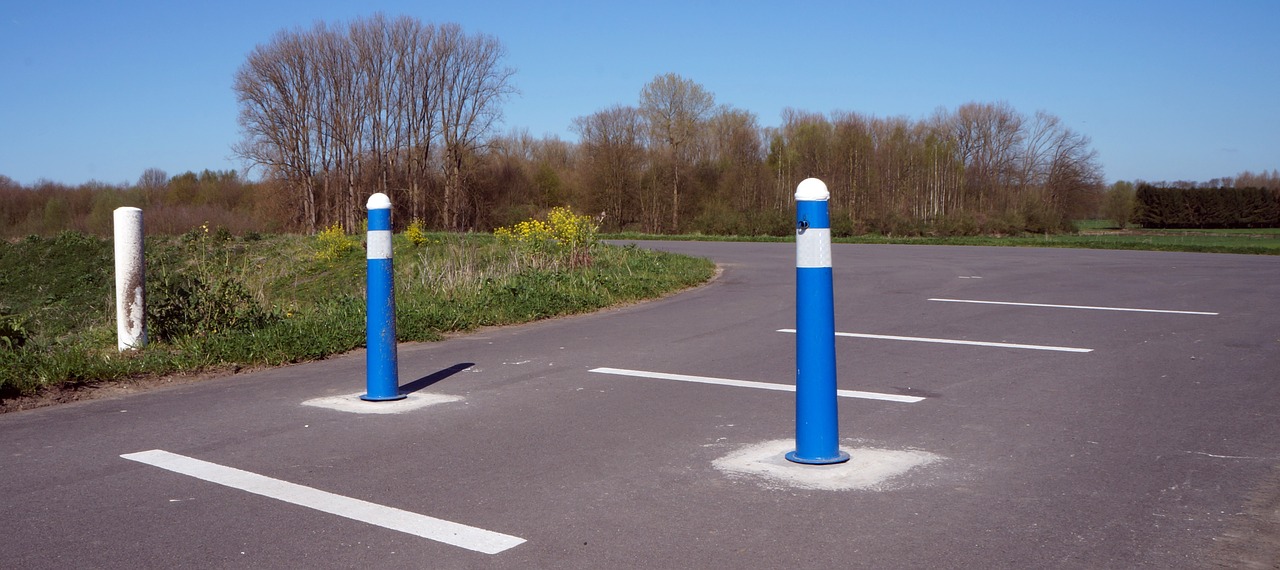Designing With Security In Mind
When designing a new building, architects and engineers consider the purpose of the structure, who it will serve, and how it will be used. It’s basic programming and understanding the user: square footage requirements, interior needs, access.
And security? Certainly.
Some public agencies have asked designers to incorporate Crime Prevention through Environmental Design principles into their projects. Recently, more agencies have been investigating how landscaping and the use of bollards can be used as protection measures. And some municipalities are even removing infrastructure that is seen as a gathering place for troublemakers.
Crime Prevention through Environmental Design (CPTED, pronounced “sep-ted”) involves using the built environment to create safer areas and neighborhoods. According to the National Crime Prevention Council, “CPTED’s goal is to prevent crime by designing a physical environment that positively influences human behavior. The theory is based on four principles: natural access control, natural surveillance, territoriality, and maintenance.”

Street bollards can be utilized as temporary or permanent solutions for prohibiting vehicles from entering.
IMS has covered these opportunities through daily leads in RFPs/Qs and in Advance Notices of upcoming projects for its architectural/engineering/consulting clients. For example, when the City of Escondido, Calif., issued an RFP for a new 5,000-SF skate park, the agency asked the architect to include Crime Prevention through Environmental Design principles through landscaping and lighting (IMS 447398).
Bollards also fit into this CPTED philosophy. They may not be new, but their importance is growing.
The New York Times reported that New York City planned to install more than 1,000 bollards to protect pedestrians and vulnerable sites from vehicular attacks.
“Since Al Qaeda and then the Islamic State began calling on would-be terrorists to drive cars and trucks into pedestrians, officials in New York City have grappled with how to better protect people from vehicular attacks,” wrote Joseph Goldstein in The New York Times.
IMS has seen several recent projects – design services and studies – involving bollards. (Bollards can even have an interesting look, as Invictus Consulting LLC pointed out.)
Some recent bollards-related projects IMS has covered for its clients include:
* The University of South Carolina released an RFP in August 2019 for the design, selection, and installation of site security improvement bollards (IMS 478430).
* The City of West Hollywood, Calif., in April 2019 sought a consultant to prepare a study of corner curb return areas of high-volume pedestrian activity that are vulnerable locations for vehicles to strike crowds of people congregating on the sidewalk. Required work included providing concept drawings and cost estimates for the installation of safety bollards (IMS 465552).
* The City of Anaheim released an RFP in January 2019 for a consultant to provide engineering services to create the Anaheim Resort Safety Bollards Pilot Program to install safety bollards at four street intersections located in The Anaheim Resort (IMS 455200).
Hillard Heintze, a security risk management firm, described how CPTED designs – visual barriers/boundaries, boulders, or decorative bollards – can be used to counter a vehicle attack.

A combination of ample lighting and decorative barriers can provide both subtle and effective means of increased safety along this sidewalk.
“These assaults – dubbed vehicle ramming attacks – have been on the rise worldwide. It is not difficult to see why. They are inexpensive, effective and easy to facilitate. No special training or set of specialized skills is required,” wrote Martin Davis of Hillard Heintze. “To adapt to this new threat landscape, security professionals have begun embracing a promising new approach: Crime Prevention Through Environmental Design, or CPTED.”
The bollard projects are but one component in the wide-ranging recommendations that make up the CPTED philosophy.
* Control access to the property. For example, schools today have only one entrance for visitors.
* Don’t let trees or shrubs obstruct the view to a courtyard or exterior spaces. This natural surveillance – the potential for people inside the building to look outward – can detect threats and deter would-be criminals.
* Define boundaries so that guests feel comfortable, while unauthorized visitors know they are out of bounds.
* Commit to ongoing maintenance. Where there is one broken window, there will soon be others. This upkeep will signal that the property is cared for and that the owner is watching.
The City of Tacoma, Wash., encourages CPTED, and offers assessments through the Planning and Development Services Department. It recommends a review at the 30 percent project planning stage.
“The proper design and effective use of the built environment can lead to a reduction in the opportunity for crime and the fear of crime,” according to the Department. “Architects, planners, builders and others proposing any new development or construction have the ability to influence the creation of safer communities by incorporating CPTED principles, which are not required, but are encouraged as a component of project design.”

Bollards can also be used to prevent vehicle access to sensitive areas where large crowds can gather. (Source: Benjamin Cruz)
To the north, in Anchorage, Alaska, a retaining wall and a concrete bench were recently removed at the suggestion of the City’s Police Department, which said the sites had “become a magnet for public drinking and other trouble.”
According to the Anchorage Daily News, “Officers with [the] police department’s Community Action Policing Unit came up with the idea, based on principles of ‘crime prevention through environmental design.’”
A story in Gulf Shore Business looked at the application of CPTED at schools, a senior living community, and resort properties. One main lesson? Build in security elements early in the design process. The article also noted that sheriff’s officers assessed resort properties and “pretended like they were a criminal.”
So back to this blog’s beginning …. When architects and engineers are designing a building, they are thinking about the user. Will it be students using a library or medical professionals in a clinic?
Now: approach that building or infrastructure not from the perspective of the user, but from the eyes of a criminal. Where would you hide, launch an ambush, or plan an escape? Without looking like a jail, a good design can make guests feel welcome and make criminals feel nervous. When programming incorporates CPTED principles, a designer can think of the clients by thinking like a criminal.

